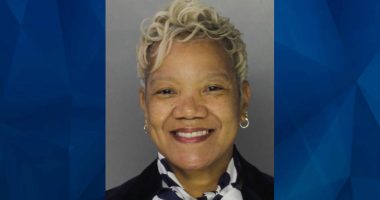
For the Cascades development in Seminole Woods, what originated this year as an 850-home proposal has resulted in setbacks, public opposition and forced retrenchment, the latest resulting from an approving vote by the Palm Coast City Council, but conditional on a limit of 416 homes. That should have cleared the way for the Cascades to move forward as decided.
But Michael Chiumento, the attorney representing both land owners whose parcels will form the Cascades development, requested and won–over one council member’s objection–an unusual re-hearing on one of the land use issues that led to the council’s Nov. 7 vote. As such, the re-hearing could again put in play contested issues debated in November, on what Council member Theresa Pontieri described as a “slippery slope.” The re-hearing will be in January.
Like the weirdly irregular boundaries of the properties in question, the intricacies behind the re-hearing may seem complicated. But they can be broken down this way: The full Cascades property spreads over 375 acres. Most of it is owned by Byrndog PCP, represented by Jeff Douglas. Of that, 44.3 acres are owned by JTL Grand Landing, represented by David West. Because of their shape, those 44 acres have been referred to as the “fishhook property.”
In November, the council approved a so-called future land use map (FLUM) amendment, meaning a change to the comprehensive plan, from what had been a county designation to a city designation of residential and conservation. (The land was annexed into Palm Coast.) That change applied to Byrndog’s 331 acres. It did not apply to JTL’s 44 acres. The Nov. 7 action had a second vote that applied various rezonings to both properties.
“There was some activity during the meeting that kind of got away from me, so I apologize for being part of this confusion,” Chiumento told the council on Tuesday. “When the ordinance was approved by city council, it did not have the authority to change the Comprehensive Plan designation for JTL Grand Landings.” The error was in the first of the two Nov. 7 votes–when the council voted on the future land use map (FLUM).
Neither the city administration nor the council are disputing Chiumento’s request or that an error was made. But it gets more contentious beyond that. Ray Tyner, the city’s planning director, described it as a “miscommunication.” Mayor David Alfin called it an “error in the facts that were presented to city council.” But on whose part? Most of the council was willing to grant the re-hearing without getting into those details. City Council member Theresa Pontieri was not.
Addressing Chiumento, Pontieri said there were two meetings when the matter was presented to the council (the first and second reading of the ordinances). She had a different interpretation of the section of city code that provides the opening for a re-hearing. That opening is predicated on whether the council “has overlooked or mis-apprehended some facts or point of law.”
“We haven’t misapprehended anything,” Pontieri said. “We used the information that was provided during those presentations by the applicant. Specifically, there are no less than five maps just in the [future land use map] ordinance alone, just in that presentation,” that included the fishhook property. “So I have a real issue saying that this council or our staff erred in some way. That’s simply not the case.” Chiumento does not dispute that the mistake was on his end.
Read Related Also: Woman found stabbed to death after a ‘f—ing weirdo’ neighbor was spotted inside the residence: Deputies
Pontieri then went through a string of emails that point to all those involved in the application clearing the way for the hook property top be included in the land use change proposal that the council voted on, including a “certification from the owner of JTL, David West, stating everything in the application was correct. He signed it.”
“My issue with the rehearing is that this provides a slippery slope for people to come before this council to take up staff time and resources,” Pontieri said, “and asked for a rehearing because things were not buttoned up in the application and were not put before this council properly on two different occasions and PLDRB on one.” The acronym refers to the Planning and Land Development Review Board, which first heard the applications and recommended approval.
The council’s limit on the development to 416 housing units applies to the entirety of the development, so while the rehearing may bring certain issues back on the table, it is unlikely that the limit would be re-visited. The focus of public opposition was on the number of units, and the fear that the development would include apartment housing, even though the city is still facing a dire shortage of apartments.
Pontieri voted against granting the hearing–not because she had an issue with it, but because she insisted that “we did not err and staff did not err.” She recommended that the council study the material surrounding the application before granting the hearing.
Mayor David Alfin by then had notably passed the gavel so he could himself make a motion to grant the rehearing, which he appeared eager to do. The remaining members of the council–Ed Danko and Nick Klufas–had no objections. (Council member Cathy Heighter was absent.)
“We’re kind of coming down to semantics on where the mistake came through if Mr. Chiumento is admitting that the fault was on their side,” Klufas said. “I’m more curious about the legal repercussions that could occur. If we decided to not read here this I assume they would basically instantly trigger a lawsuit and that process would be timely and also cost prohibitive. But I agree that it could be a slippery slope but I think in this case, it was timely.
When the city attorney tentatively interjected to suggest that the rehearing “should be limited to whether or not the JTL property should be removed” from the Nov. 7 decision, Alfin dismissed the suggestion outright: “That was not my motion,” he said.
![]()
cascades-seminole-woods










